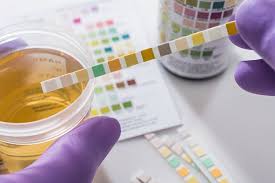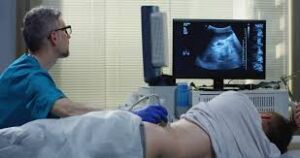UTI Symptoms: What to Watch For and When to Seek Help
The urinary tract is a system of organs that store and excrete urine, a fluid waste product of the body. It includes the kidneys, ureters, bladder, and urethra. Urinary tract infections (UTIs) occur when bacteria or other microorganisms enter the bladder or urethra, leading to symptoms such as pain in the lower abdomen and frequent urge to urinate. Treatment for UTIs generally involves antibiotics while urinary incontinence requires lifestyle modifications such as weight loss and Kegel exercises as well as sometimes medication or even surgery to strengthen weak muscles around the bladder. Please keep reading for details on the following topics:
Overview of the urinary tract
Symptoms of a urinary problem
Treatment of urinary problems
Signs and symptoms of a UTI- Urinary Tract Infection
Risk factors of UTI
Prevention of UTI
Diagnosis of UTI
Urinary incontinence
When to seek urgent medical care

PARTS OF THE URINARY TRACT
The urinary tract is a vital system responsible for eliminating waste from the body in the form of urine. It consists of several key organs:
- Kidneys: These are a pair of bean-shaped organs located on either side of the spine, below the rib cage. The kidneys filter waste products and excess substances from the blood to produce urine. They also help regulate electrolyte balance and blood pressure.
- Ureters: These are thin tubes that connect each kidney to the bladder. Their primary function is to transport urine from the kidneys to the bladder for storage. Peristaltic contractions help push urine through the ureters.
- Bladder: The bladder is a hollow, muscular organ located in the pelvis. Its primary function is to store urine until it is expelled from the body during urination. The bladder expands as it fills with urine and contracts to expel urine through the urethra.
-
Urethra: This is the final part of the urinary tract, extending from the bladder to the exterior of the body. In males, the urethra also serves as the passage for semen during ejaculation. Its main function is to transport urine from the bladder out of the body during urination.
SYMPTOMS OF A URINARY PROBLEM
It is important to know when to seek urgent medical care, as delaying appropriate treatment can lead to further health complications. If you experience any of the following symptoms, you should seek medical help immediately. If you have any doubts about whether you should seek medical care, it is always better to err on the side of caution and consult with your doctor. However, common symptoms that may indicate a urinary problem include:
- Pain or burning sensation during urination (dysuria)
- Frequent urge to urinate, even with minimal urine output (urgency)
- Pain or discomfort in the lower abdomen or pelvic region
- Difficulty or straining while urinating
- Incomplete emptying of the bladder
- Blood in the urine (hematuria), which may appear pink, red, or cola-colored
- Cloudy or foul-smelling urine
- Increased frequency of urination, especially at night (nocturia)
- Weak urine stream or dribbling after urination
- Pelvic pain in women, which may be related to the reproductive organs or urinary system
- Back pain or flank pain, which may indicate kidney involvement
- Fever or chills, which may suggest an infection of the urinary tract or kidneys
- Changes in urine color, volume, or odor
- Leakage of urine, especially when laughing, coughing, or sneezing (urinary incontinence)
- Difficulty starting or maintaining urination (hesitancy)
- Feeling of incomplete bladder emptying after urination
- Increased thirst or dehydration, which may accompany certain urinary conditions
- Swelling in the lower extremities, particularly the ankles, which may be related to kidney or urinary issues.
TREATMENT OF URINARY PROBLEMS
The treatment of urinary problems often depends on the underlying cause of the issue. However, here are some general strategies that can help alleviate symptoms and promote urinary tract health:
- Hydration: Drinking plenty of fluids, particularly water, helps flush out bacteria and toxins from the urinary tract, reducing the risk of infection and promoting overall urinary health.
- Avoiding Urine Retention: It’s essential to empty the bladder regularly and avoid holding urine for prolonged periods. Urine retention can increase the risk of urinary tract infections and other complications.
- Dietary Adjustments: Limiting or avoiding alcohol and caffeine consumption can help reduce irritation to the bladder and urinary tract. Certain foods and beverages, such as spicy foods, citrus fruits, and carbonated drinks, may also exacerbate urinary symptoms in some individuals.
- Clothing Choice: Wearing loose-fitting, breathable underwear made of natural fibers like cotton can help prevent moisture buildup and reduce the risk of irritation or infection in the genital area.
- Hygiene Practices: Avoiding the use of harsh or scented feminine hygiene products, including douches and perfumed soaps, can help maintain the natural balance of bacteria in the genital area and prevent irritation or infection.
- Sexual Activity: Allowing symptoms to heal before engaging in sexual intercourse can help prevent further irritation or infection of the urinary tract. Additionally, practicing safe sex, including using condoms, can reduce the risk of sexually transmitted infections that may affect the urinary system.
It’s important to note that these measures may provide relief for mild urinary symptoms or help prevent recurrent issues, but they may not be sufficient to address more severe or persistent urinary problems. Individuals experiencing significant or persistent urinary symptoms should consult a healthcare professional for proper evaluation and personalized treatment recommendations.
RISK FACTORS OF UTI
These risk factors increase the likelihood of developing a urinary tract infection (UTI) in individuals.
- Shorter Urethra in Women: The shorter length of the female urethra allows bacteria to reach the bladder more easily, increasing the risk of UTIs compared to men.
- Frequent Sexual Activity: Sexual intercourse can introduce bacteria into the urinary tract, particularly in women, leading to an increased risk of UTIs.
- Contraceptive Use: Certain contraceptive methods, such as diaphragms, may contribute to UTIs by potentially increasing bacterial growth or disrupting the natural balance of vaginal flora.
- Menopause: Decreased estrogen levels in menopausal women can lead to changes in the urinary tract, making them more susceptible to UTIs.
- Urinary Tract Abnormalities: Structural abnormalities or congenital defects in the urinary tract can create conditions favorable for bacterial growth and UTIs.
- Obstruction of the Urinary Tract: Conditions like kidney stones or an enlarged prostate gland can obstruct urine flow, leading to stagnant urine that increases the risk of bacterial overgrowth and UTIs.
- Urethral Catheterization: The use of urinary catheters, particularly over an extended period, can introduce bacteria into the urinary tract and increase the risk of UTIs, especially in healthcare settings.
-
Urinary Tract Surgery or Procedures: Surgical interventions or procedures involving the urinary tract, such as bladder surgery or cystoscopy, can disrupt the natural defenses of the urinary tract and increase susceptibility to UTIs.
TESTS TO CONFIRM UTI

To confirm a urinary tract infection (UTI) and determine its severity and possible complications, healthcare providers may order the following tests:
- Urine Analysis: A urine sample is collected and analyzed for the presence of bacteria, white blood cells, red blood cells, and other indicators of infection.
- Urine Culture: This test involves growing bacteria from a urine sample in a laboratory to identify the specific type of bacteria causing the infection and determine which antibiotics are most effective for treatment.
- CT scan of the Abdomen: In cases of complicated or recurrent UTIs, or when there are concerns about kidney stones, blockages, or other structural abnormalities in the urinary tract, a computed tomography (CT) scan may be performed to obtain detailed images of the kidneys, ureters, bladder, and urethra.
-
Ultrasound: An ultrasound scan may be used to visualize the urinary tract structures, such as the kidneys, bladder, and ureters, to detect abnormalities, such as kidney stones or blockages, and assess the overall health of the urinary system.
SIGNS AND SYMPTOMS OF UTI
-
Frequent Urination: This can be a sign of a urinary tract infection (UTI), overactive bladder, or other medical conditions affecting the urinary system.
- Burning Sensation on Urination: Often associated with UTIs or inflammation of the urinary tract.
- Passing Small Amount of Urine Frequently: May indicate conditions like urinary retention, UTIs, or bladder irritability.
- Cloudy Urine: Can be a sign of infection, dehydration, or other underlying medical issues affecting the kidneys or bladder.
- Red, Pinkish, or Dark-Colored Urine: May indicate blood in the urine, which can be a sign of UTIs, kidney stones, or other urinary tract problems.
- Urine with a Strong Odor: Can be caused by concentrated urine due to dehydration or may indicate the presence of bacteria from a UTI.
- Pelvic Pain: Can be associated with bladder infections, urinary stones, or conditions affecting the reproductive organs.
- Fever and Chills: These symptoms may accompany a urinary tract infection, particularly if the infection has spread to the kidneys.
- Nausea and Vomiting: Can occur in severe cases of UTIs or kidney infections, indicating systemic involvement.
- Waist or Back Pain: May suggest kidney involvement, such as kidney stones or kidney infection.
- Discharge: In women, vaginal discharge may accompany urinary tract infections or other genital infections.
- Irritability and Poor Feeding in Children: These symptoms may indicate discomfort or pain associated with urinary tract issues, especially in infants and young children.
- Confusion and Agitation in Older Persons: These symptoms may indicate a more severe urinary tract infection or other medical conditions affecting cognitive function, especially in older adults.
-
Incontinence: Loss of bladder control can be caused by various factors, including UTIs, bladder muscle weakness, or neurological conditions.

PREVENTION OF UTI
These preventive measures can help reduce the risk of urinary tract infections (UTIs):
- Emptying the Bladder: Urinate promptly when feeling the urge to avoid holding urine for prolonged periods, which can increase the risk of UTIs.
- Avoiding Feminine Hygiene Products: Certain products, such as douches and sprays, can disrupt the natural balance of bacteria in the genital area, making it more susceptible to infections.
- Urinating After Intercourse: Voiding urine after sexual intercourse helps flush out any bacteria that may have been introduced into the urinary tract during sex.
- Hydration: Drinking an adequate amount of fluids, particularly water, helps flush out bacteria from the urinary tract and maintains urinary tract health.
- Cranberry Juice: Some studies suggest that cranberry juice may help prevent UTIs by preventing bacteria from adhering to the urinary tract lining, but more research is needed to confirm its effectiveness.
- Proper Wiping Technique: Wiping from front to back after using the toilet helps prevent the spread of bacteria from the anal area to the urethra, reducing the risk of UTIs.
- Avoiding Douching: Douching can disrupt the natural pH balance and protective mechanisms of the vagina, increasing the risk of infections, including UTIs.
- Considering Contraceptive Methods: Certain contraceptive methods, such as diaphragms or spermicides, may increase the risk of UTIs. Consulting with a healthcare provider about alternative options may be beneficial.
- Maintaining Genital Hygiene: Keeping the genital area clean and dry helps prevent the growth of harmful bacteria that can lead to UTIs.
- Preventing Moisture: Avoiding prolonged moisture in the genital area, such as wearing wet clothing or swimsuits for extended periods, can help prevent bacterial overgrowth and UTIs.
- Cleaning Before and After Intercourse: Maintaining good hygiene practices, such as washing the genital area before and after sexual activity, can help reduce the risk of UTIs.
- Changing Soiled Underwear or Diapers: Promptly changing soiled underwear or diapers helps prevent the accumulation of bacteria in the genital area, reducing the risk of UTIs.
- Choosing Cotton Underwear: Cotton underwear allows for better airflow and moisture absorption, creating a less favorable environment for bacterial growth compared to nylon or synthetic fabrics.
- Avoiding Alcoholic Beverages: Alcohol consumption can irritate the bladder and increase urinary frequency, potentially increasing the risk of UTIs.
-
Limiting Sugary Foods and Drinks: High sugar intake can promote the growth of bacteria in the urinary tract, increasing the risk of UTIs. Limiting sugary foods and drinks may help prevent infections.
URINARY INCONTINENCE
Urinary incontinence is an inability to control one’s bladder, resulting in involuntary loss of urine or leaking. It can be caused by weakened pelvic muscles as a result of childbirth or menopause, nerve damage from surgery or injury, certain medications, obesity, or another underlying health condition.
WAYS TO DECREASE URINARY INCONTINENCE
To decrease urinary incontinence and manage its symptoms effectively, individuals can consider the following strategies:
- Urinate Regularly: Try to urinate every 3 hours, even if you don’t feel the urge, to prevent overfilling of the bladder.
- Wear Comfortable Clothing: Choose clothing that is easy to remove when using the restroom, to facilitate quick and easy access.
- Keep a Urinal Handy: Have a urinal or portable toilet nearby, especially if mobility is limited or access to a restroom is challenging.
- Avoid Alcohol and Smoking: Alcohol and smoking can irritate the bladder and exacerbate urinary incontinence symptoms. Limit or avoid these substances.
- Perform Kegel Exercises: Strengthen pelvic floor muscles with Kegel exercises, which can improve bladder control and reduce leakage.
- Stay Hydrated: Maintain adequate fluid intake, but be mindful of consuming excessive amounts of fluids, especially before bedtime, to minimize nighttime urinary urgency.
- Practice Proper Hygiene: When wiping after using the restroom, always wipe from front to back to prevent the spread of bacteria from the anal area to the urinary tract.
- Avoid Irritants: Refrain from using douches, bubble baths, or perfumed products on the genital area, as these may irritate the urinary tract and exacerbate symptoms.
-
Change Sanitary Products Regularly: If using pads or liners, change them frequently to maintain cleanliness and prevent skin irritation.
WHEN TO SEEK MEDICAL CARE FOR UTI SYMPTOMS
It is important to know when to seek urgent medical care, as delaying appropriate treatment can lead to further health complications. If you experience any of the following symptoms, you should seek medical help immediately. If you have any doubts about whether you should seek medical care, it is always better to err on the side of caution and consult with your doctor. Here are situations where medical attention should be sought promptly:
-
Worsening Symptoms: If symptoms persist or worsen despite home remedies or over-the-counter treatments, medical evaluation may be necessary.
- Difficulty Urinating: Inability to urinate or experiencing significant difficulty passing urine warrants immediate medical attention, as it could indicate a urinary obstruction or other serious issue.
- Persistent Symptoms: If symptoms of a UTI, such as burning sensation during urination or frequent urination, persist after completing a course of antibiotics, medical assessment is needed to determine if the infection has resolved or if further treatment is necessary.
- Development of New Symptoms: If new symptoms develop, such as fever, severe pain in the abdomen or back, blood in the urine, or signs of systemic illness, prompt medical evaluation is warranted to rule out complications or other underlying conditions.
- Recurrence of Symptoms: Recurrent UTIs or episodes of urinary incontinence despite preventive measures may indicate an underlying problem that requires medical intervention.
- Other Medical Conditions: Individuals with pre-existing medical conditions, such as diabetes or a history of kidney stones, should seek medical advice promptly if they experience urinary symptoms, as these conditions can predispose them to urinary tract issues.
- Complications: Seek immediate medical attention if symptoms of a UTI or urinary incontinence are accompanied by signs of complications, such as severe pain, high fever, confusion, or signs of kidney involvement, as these may indicate a more serious condition requiring urgent treatment.
-
Persistent Pain: Persistent or severe pain in the pelvic region, lower abdomen, or back that is not relieved with over-the-counter pain medication warrants medical evaluation to identify the underlying cause.
Disclaimer: The information provided in this content is for general informational purposes only. It is not intended as medical or healthcare advice, diagnosis, or treatment. Always seek the advice of a qualified healthcare professional with any questions you may have regarding a medical condition or healthcare decisions. UTI symptoms UTI symptoms UTI symptoms UTI symptoms UTI symptoms

